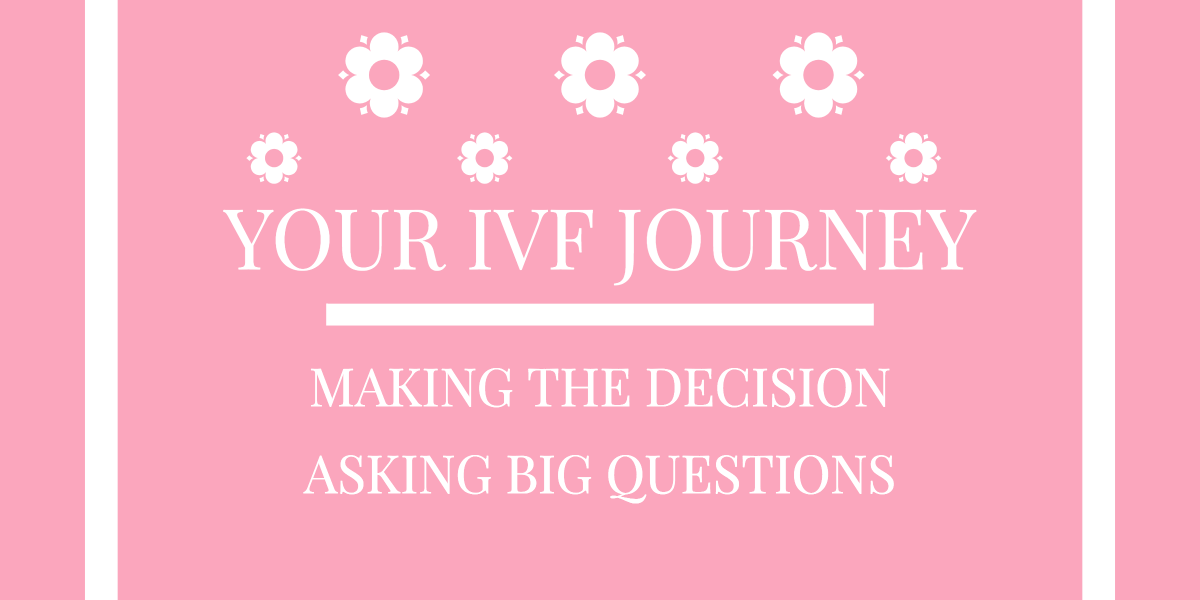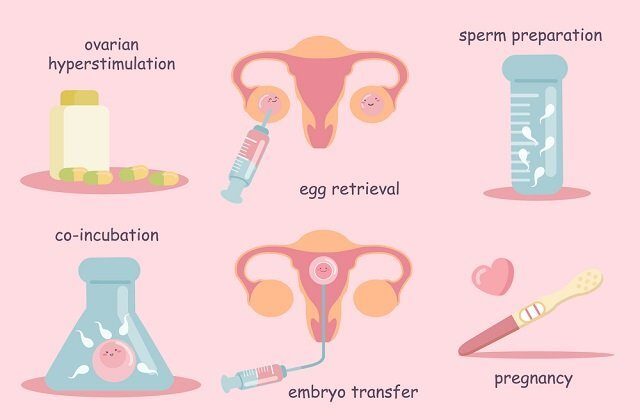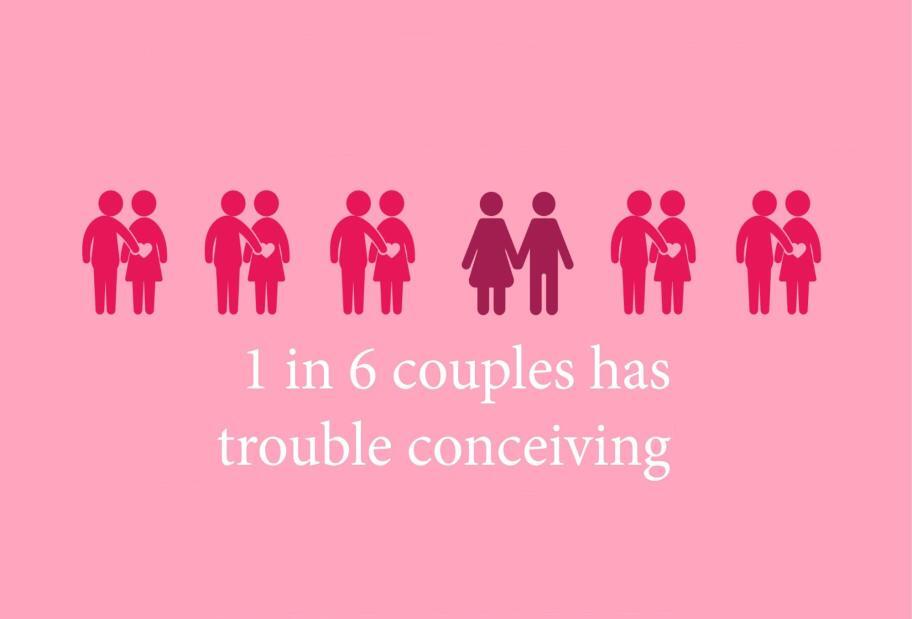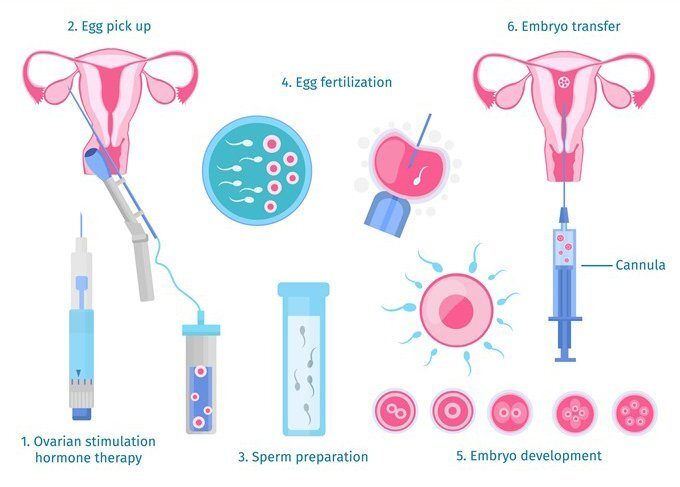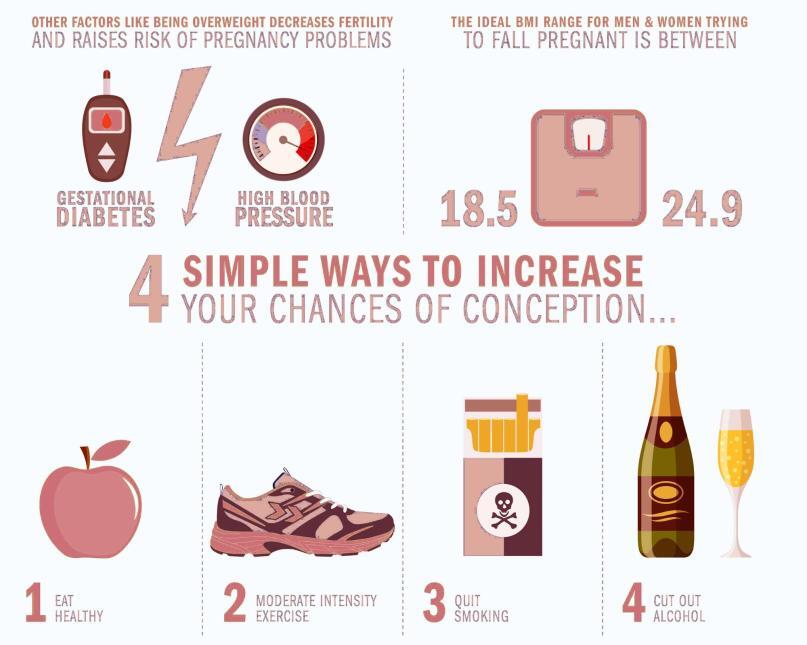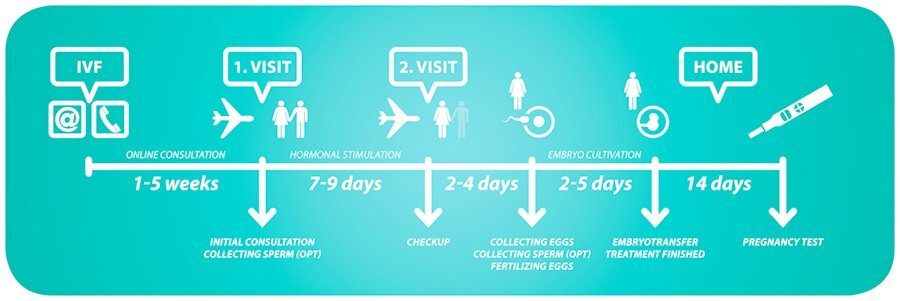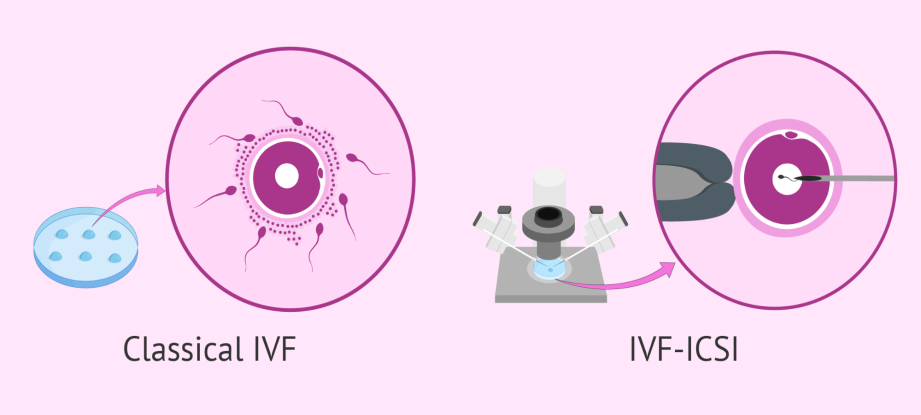About IVF Treatment
All You Need to Know About IVF Treatment
When it comes to understanding IVF, it’s easy to get confused. After all, few parts of the world of pregnancy are so new, or as rapidly changing, like that of In Vitro Fertility Treatment. If you are someone who wants to consider undergoing this kind of treatment, then it pays to invest more time into learning about it as a process.
When you learn more about this vital process, it will soon become much easier to take it on as part of your life. In this article, we’ll cover as much information as we can about this unique form of pregnancy.
Let’s take a closer look at In-Vitro pregnancy overall.
Getting to grips with your In-Vitro Pregnancy decision
While IVF has undergone many changes since it first arrived in 1978, it’s developed to the point where today In-Vitro pregnancies are incredibly sophisticated.
With the process becoming ever-more refined as time has gone on, Fertility Treatment is now much easier to go through.
The first and most important feeling you can have, though, is that you are ready to move forward.
There are many reasons to consider undergoing this fertility treatment.
We’ll look at some of those reasons as this guide presses on. For now, though, it’s important to make sure that you feel confident in undergoing this kind of treatment: this article will try to provide you with the knowledge you need to feel that confidence.
Just like having a child in any other circumstance, there has to be total certainty that you are ready for having a child. The process may be different, but the end result is the same: a baby to call your own.
Undergoing Fertility Treatment
Should you choose to undergo fertility treatment, it pays to know what the process actually entails. As you might already have found out, for some people standard intercourse is not enough to bring about pregnancy or conception. Either male or female can be the cause – or both.
Low sperm quality or low sperm counts can often be the cause of infertility. By using microinjection, IVF therapy looks to make sure that, rather than the 15-million sperm cells used to try and make just one sperm cell succeed, just one single sperm is needed.
The earliest development in this industry came in the early 1950s when John Rock made the ‘error’ of extracting an intact, fertilised egg. By the late 1950s, Worcester Foundation scientific expert Min Cheuh Chang proved that in vitro fertilization was a possibility, by using the system to give birth to a baby rabbit.
What is IVF exactly?
Is a unique form of fertilisation. In this process, you use a formulated, manual combination of an egg and sperm into a laboratory dish.
From there, it is taken and then transferred to the uterus. The embryo is then grown in many ways like a typical baby, allowing the pregnancy process to carry on like any other child.
Even if the steps of the treatment can be a little bit confusing, you will find that you need to undergo the following processes:
- Hormone Stimulation: To begin, medication is provided to help stimulate the production of new eggs. When possible, multiple eggs are desired to help maximise the chances of development afterwards. After this has taken place, a transvaginal ultrasound will take place. This is used to help look closer at the ovaries, as well as any collected blood test samples. At this stage, it’s likely that the process can continue forward.
- Collecting Eggs: The next phase of the process, collecting the egg, is carried out first by removal of the eggs. To do this, anaesthetics are usually used to help reduce any discomfort. During the operation, the expert on-hand will use ultrasound images as a guide. On the same day, the male is asked to produce a sample of sperm, which is prepared for combination with the eggs.
- Fertilization: After the above process has been carried out, the mother candidate’s eggs will be fertilized with father candidate’s sperm. Afterwards, this is cultured in the laboratory for 16–20 hours, after which checks for signs of fertilisation will take place.
- Embryo Transfer: At this stage, some quality embryos will be transferred to the mother candidates’ uterus. The embryos will at this point be transferred to the uterus. This process can take three or five days. After this catheter or small tube is inserted into the uterus to transfer the embryos.
What does IVF mean, though?
As IVF is “one of several techniques available to help people with fertility problems to have a baby.”
Is a significant step forward in the process, and plays a significant role in helping you better understand that having a child is possible.
Now that we know a little bit more about the general process, it might be useful to look at how this treatment operates.
The more that you can learn about the treatment now, the less stressful the whole experience shall feel as time goes on and you learn more about the treatment as a whole.
While it can feel daunting at first, there is no reason to feel like you cannot make the most of the treatment. If you follow this guide, you’ll fully understand it before you get involved with the next part of the process.
How does IVF work?
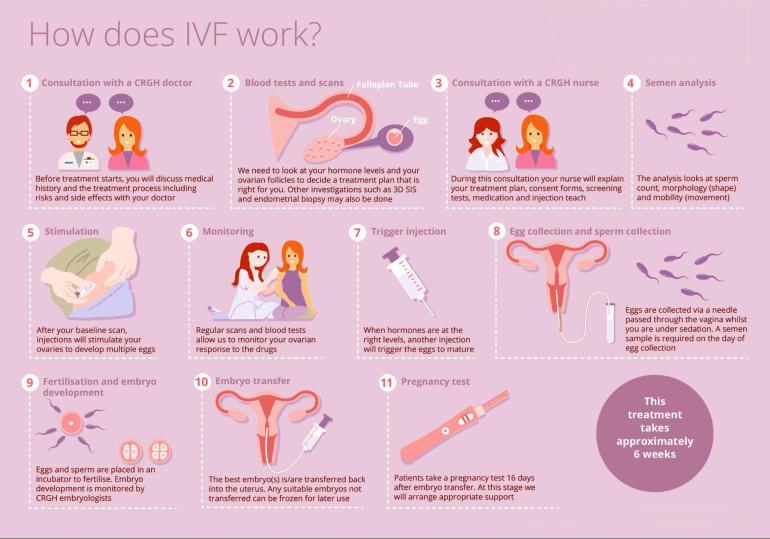
As mentioned so far, IVF works by going outside of the body to make a natural process take place.
If your body, or bodies, are unable to make the process work normally, then IVF can be the solution required.
This process mixes the egg of the mother candidate with the sperm of the father candidate. When this is done, it produced a significantly higher chance of creation.
Typically, this process will take around 20 days – though it can be as short as 16 in some cases. Depending on the protocol chosen, long or short, you will have a different waiting time. You will need to go through an extensive period of health check-ups to make sure that you are both going to be successful candidates for the treatment.
Analysis and testing become so vital if you want to make sure that you get a Treatment that works.
Such preparation will put you in a more optimal condition to deal with everything that will come as a result of participating in this process.
Based on the results that you get back, In vitro Fertility Treatment will either be agreed upon or alternatives will be sought.
So, how does this work within the body itself? How can you ensure that treatment is a success?
The first thing to try and understand is that there is no guarantee of this kind of treatment.
Your age, your health, and your uterus condition will play a major role in deciding what happens next. The success is also determined by the quality of treatment and equipment used.
For this reason, it always pays off to invest more time in finding not only the right clinic but the right practitioner.
Understanding the process
At the moment, IVF becomes recommended for women or men who suffer from fertility problems. Some of the most commonly associated fertility problems that might come up for a woman would include:
- Uterus problems that could harm the development at those vital early phases.
- Hormonal limitations that can make it hard to produce good quality eggs.
- Blocked or damaged fallopian tubes that may make natural conception difficult.
- Women who have suffered from and live with Endometriosis.
-
Otherwise unexplained or undiagnosed fertility issues.
How is the procedure normally?
So, now that you hopefully feel more confident in knowing what the procedure entails, it’s time to take a closer look at the process.
- First off, you will need to meet with a proven IVF specialist. You wouldn’t go to a non-specialist for any other kind of treatment, so don’t make that mistake with this therapy. Start by going to meet up with a specialist, and you’ll go through a series of different tests and discussions. Such assistance is likely to produce better results and allows both parties to know where they stand.
- Once you go through this initial meeting, you’ll undergo medication that inhibits your natural menstrual cycle. Medication is vital, as it ensures that your two-stage program is more likely to achieve success. You’ll usually use both a daily injection that you will self-use. Such treatment lasts for around two weeks.
- Next, the medical team will look to make sure that your egg supply is suitably strong enough for the next phase of the process. This means taking follicle stimulating hormone, or FSH. It helps to increase the number of eggs that your ovaries are capable of producing, increasing the chance of fertilisation.
- At this point, you’ll often undergo a progress analysis and evaluation of how things are going, usually involving ultrasound scans and blood tests to ensure that everything feels normal. You’ll also go through another hormonal injection usually to help speed up the process.
- Afterward, your eggs will be collected during a sedated treatment session. This won’t take long and is far less damaging or discomforting than it might sound just now. Once the eggs are collected, they will be prepped to fuse with the sperm from the partner or donor in a lab. When this is carried out, they are allowed to inseminate in their own specific incubator.
- Lastly, the embryo is transferred to the body. The transfer will take place using a catheter tube, and this will make sure that the process is quick, painless and usually free from sedatives. Various factors will determine the egg quantity taken, though, so there is no exact plan in place for this section. It’s entirely down to your circumstance.
What happens during the treatment that might be different from the above?
While most medical procedures can be standardised and consistent, In-Vitro Fertility Treatment is nothing of the sort.
If you want to know what happens during In vitro Fertility Treatment that is different from the above, it’s hard to say for sure.
Your age, your health and even just luck will play a major role in determining what steps might be added or removed from your treatment plan.
Don’t let that put you off though: pregnancy is a unique and personal journey. Even with the help of the fertility treatment to work out any bumps along the way, there still will be new challenges to overcome. Even with the powerful and effective forms of this treatment available, there will always be changes to the formula based on your own needs.
However, the majority of fertility processes will follow the above. If you feel you require further details about what your treatment might entail, though, you can receive further information during a free consultation.
The IVF Timeline: From Start to Finish
The timeline can be quite hard to work out at first, and understanding it from start to finish is so important.
This is a long-term process and can mean that you have a lot of time spent researching about treatment options. While stress isn’t the primary factor on fertility success as previously suggested, it’s crucial that you have all the information that you need at hand to feel comfortable.
The more that you can do to feel in control of the whole situation, the better the long-term chances of success are for your treatment. Typically, then, the treatment process is going to take around three weeks.
This will involve all of the necessary testings to take place and to ensure that your body is ready to deal with the physical changes and challenges which are set to come in the near future.
More importantly, you will need to add at least another two weeks on for various factors. This includes both your pregnancy test, which will add extra time outside of the testing cycle. The first part of the cycle, before starting your treatment, will take around four weeks: this involves getting yourself prepared for treatment.
After this, things tend to move a touch faster which should make it easier for you to get the work that you need to be carried out. Most of the time is then spent waiting for appointments which are often over quite quickly. So, you will need to be ready to preach the art of patience during this critical time.
The timeline, from start to finish can be hard to keep up with, but it’s relatively easy to understand. What makes changes to the timetable take place, though?
Understanding changes to the Fertility Implantation Timeline
Remember that as part of your IVF implantation timeline you need to spend a lot of time waiting for results to come back. This can be from your eggs and your embryos to making sure that medication is working as intended. This naturally adds more time to the experience, as the whole episode needs you to put more time in to get the right results.
This is a natural part of the process. There is nothing wrong with delays or complications. This is a complex process, so it is to be expected issues will arise as time goes on. However, understanding the changes to your Fertility implantation timeline is very important for ensuring you can be mentally prepared.
Studies show that mental health becomes a major topic of importance during Fertility Treatment, so preparing for setbacks and complications will ensure you’re better prepared. A lack of preparation will make it harder to keep yourself focused on the task at hand: giving birth to a healthy child.
Being able to know how long does the treatment takes from start to finish, then, will hopefully add a touch of comfort. You should look to find out rough timelines during your treatment consultation, as it is much more likely to be accurate according to your situation.
Getting to grips with the stages of Fertility Treatment
The first thing that you should understand with the stages of IVF is that so many factors will change the process for you.
For example, your age and what your health tests show will make a big difference to how you handle and go about your Fertility Treatment. If you keep that in mind, then you should be much more likely to be able to handle the changes in the timeline for each stage.
It’s important that you maintain a realistic appraisal of what is to come, though. While the stages of treatment get easier with every passing year, complications can arise. Our bodies are unique, and what works easily for someone else might be more challenging for you. This is why you need to appreciate that there will be times when the Fertility stages become delayed.
If you can get used to the idea that this will happen, you should find it much easier to come out the other side in a more optimistic frame of mind. Whatever you do, though, it pays to spend a bit more time looking into your history. Don’t allow yourself to get overly caught up on standard times: IVF for you will take the time that it takes: no more, no less.
Think about what the procedure of the treatment is helping to achieve: the birth of a human lifeform.
For that, it will be beneficial to accept this will take time. While the typical timeline for each stage of Fertility Treatment might change, the final objective won’t.
What types of IVF exist?
Another element to remember about In vitro Fertility Treatment is that many types exist. The best techniques for your needs will be entirely dependent on your condition prior to starting off. At the moment, the most popular types of treatment that people undergo include:
- ICSI IVF. This technique is very popular and is a common form of fertility treatment. The ICSI treatment fertilises the egg using a device known as a micromanipulator, injecting the sperm into the egg in a lab-based environment beforehand.
- IVF. This form, naturally, is about allowing for a natural entrance for the sperm into the egg. While carried out in the lab format, there is no micromanipulation to help make sure that the process succeeds.
- NCIVF. Natural Cycle In vitro Fertility Treatment, is for women who wish to go with minimal to no hormone medications. This is more of an adjustment to the preparation for IVF than a direct form of treatment.
- IUI. A common kind of In vitro Fertility Treatment, IUI is used for direct injection of the sperm into the uterus of a woman, avoiding egg collection entirely: cost-effective, with lower success rates.
- Blastocyst. The name of the embryo come day five, and on the fifth day most of the time a blastocyst transfer will take place to start the process.
Being able to understand and appreciate the various techniques used is very important.
You will soon find that you get all the help that you need to make more intelligent calls about the kind of In Vitro Fertility Treatment that is suitable for you. Of course, during any sort of consultation, you will be made aware of each of the options which might best fit your own needs.
The hormones used in IVF
One of the most valuable things to know about IVF is the hormones that used.
Even some people tend to go without, as noted in the ‘Natural Cycle IVF’ treatment above, they play a greater role in success rates of treatment on many occasions.
If you are not planning to go through Natural Cycle, then it helps to understand what hormonal treatments you receive.
This often includes key treatments such as:
- Gonadotrophins Follicle Stimulating Hormone (FSH). This hormone is one which is primarily produced by the pituitary gland and is commonly used to help regulate the function of our ovaries and our testicles. An inefficiency in this hormone plays a leading role in infertility in both men and women.
- Luteinising Hormone (LH). Also produced by your pituitary gland, this is used to help control our ability to reproduce. Naturally, then getting more LH into the system will help to make sure that you are much more likely to see an increase in production capability thanks to the rise in LH levels.
These are the two most common hormones used in In vitro Fertility Treatment and tend to give you a better idea of what you will be going through. As ever this will be evaluated in person during a consultation.
Understanding Success Rates
If you take a look around at the numerous IVF statistics out there, you might be shocked to see our IVF treatments success rates that are so high in comparison.
The modern form of IVF is far more thorough and secure than previously.
For this reason, it helps you to understand that success rates are improving all the time.
For example, at the moment the success rates for those aged 20-29 have as much as a 56% chance of success.
Even those aged 40+ have a 14% chance of success: that’s a much higher success rate than was available even a few short years ago.
Please be aware that these are success rates for actual pregnancies, not live birth rates. Live birth success rates are often 10-15% on the percentage given above. Naturally, success rates are mostly dictated by age, health and fertility history.

